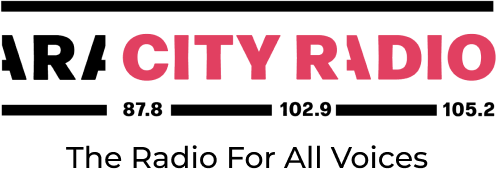On Local Matters this week, I take you to Rollingen. Rollingen, you might wonder – why – and even where. Rollingen is a village near Mersch and part of the Mersch commune. And yesterday, we went to visit the star of Rollingen – the Kass-Haff. Kass-Haff is a pedagogical farm and farmer Tom Kass showed us around. He grew up in Rollingen and has spent most parts of his life in this village. Even though he wanted to leave and start a new farm in New Zealand or wherever, in the end he stayed in Rollingen. And now he feels like he belongs there. I asked him what else, besides his farm, has been going on in Rollingen over the past years. The few people who live in Rollingen work in the city and only come here to sleep. Rollingen is a dormitory, according to Tom Kass. His farm is the only remaining attraction in the village.
When you pass the hill with Tom’s farm, you first see a few car sellers on the side on the street, then you get to the core of the village. Family houses built against the hill, with small streets leading up on the one side of the road, the rails for the train and behind them meadows.
Cars, cars, cars – and once every 15 minutes a train that passes without stopping, Rollingen doesn’t have a train station anymore.
If you go up the hill, into the residential area and farther however, you feel how peaceful Rollingen looks from here. The view over the meadows, and the river Alzette that me-anders through the green, the hills in the background – quite romantic. And if you go even farther on the hill and in the woods, you come to Rollingen’s flowing soul. In this sandstone hill, there is a natural source. In case, you still wonder why we talk about this village, here’s one reply: Rollingen does matter. In the hill, in the ground, there is a natural drinking water source. The source in Rollingen contributes to the drinking water supply of the city of Ettelbrück, around 14 kilometres farther north.
The source, on the soil of the commune of Mersch, belongs to Ettelbrück. About a hundred years ago, the city of Merwsch sold the source to the city of Ettelbrück. Since then, water has been flowing from the natural spring in Rollingen through the tubes to the tabs and showers of Ettelbrück – around 800 cubic metres every day, one third of all the drinking water consumed in Ettelbrück. 800 cubic metres, this is enough for the needs of 6000 inhabitants.
Normally, water from natural or drilled sources stays where it comes from – if a source is located in Mersch, it would be used to supply drinking water to the residents of Mersch. But in some cases, one commune sold the source to another one, so the water travels. The natural sources such as source Dreibouren in Rollingen are important for the country – even more in future. Half of Luxembourg’s drinking water is supplied by the upper Sure lake. The other half comes from ground water including natural sources, Christine Lambert explains. She is responsible for the drinking water department at the national water management administration.
Climate change related droughts and heatwaves threaten drinking water supply – even in Luxembourg. While normally the water from the lake and the groundwater is used, in summer, in winter it recharges. In very dry years, this recharge takes longer than possible.
In the Upper Sure lake and any open lakes and rivers, you can see how water levels rise and drop. For groundwater such as natural sources, this isn’t visible. The sources sometimes lie dozens of metres underground. The lack of rain first leads the upper ground layers to drying out. Little by little the effects of the drought reach lower layers of the soil. Whereas the lakes show the consequences fast, groundwater only diminishes after three or four consecutive years. The sources far underground can balance the negative impact for a while. That’s why they are even more important. Currently however the situation is good. We don’t face water shortages this year. Nevertheless, Christine Lambert insists that everyone should play their part in reducing drinking water consumption.
